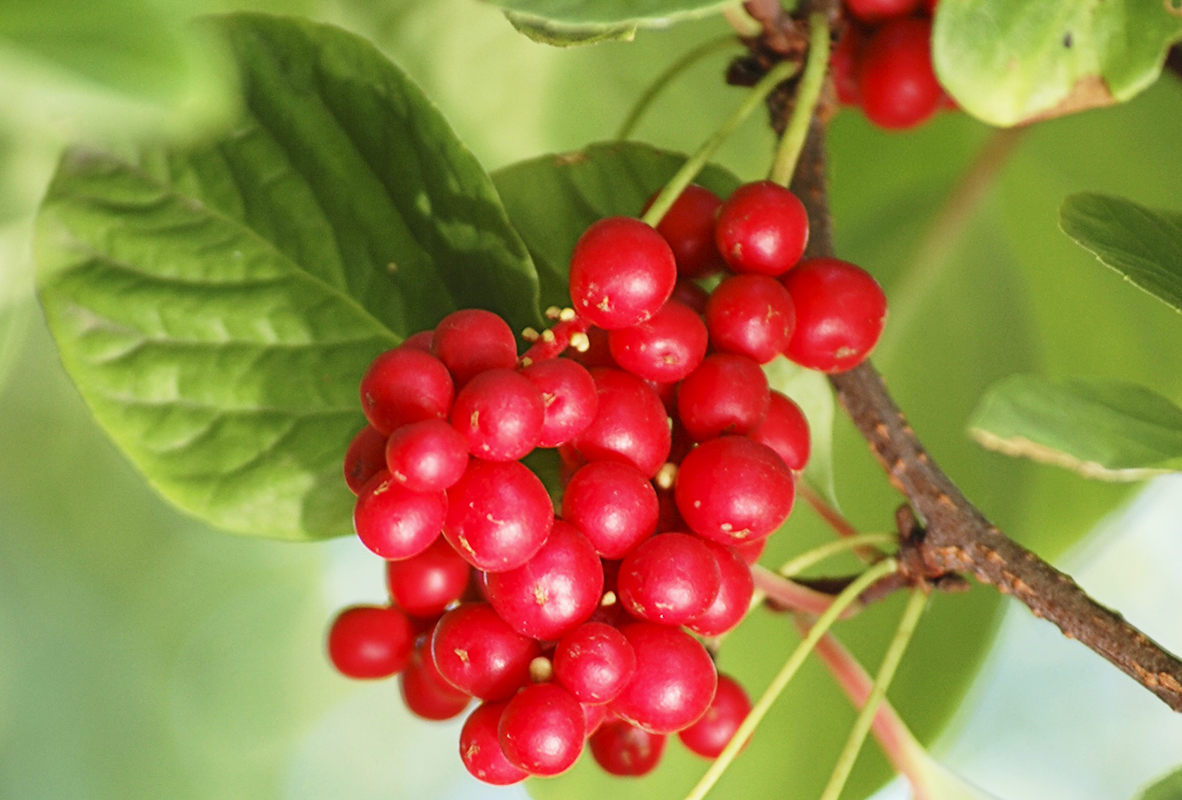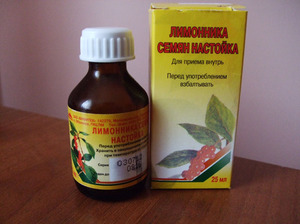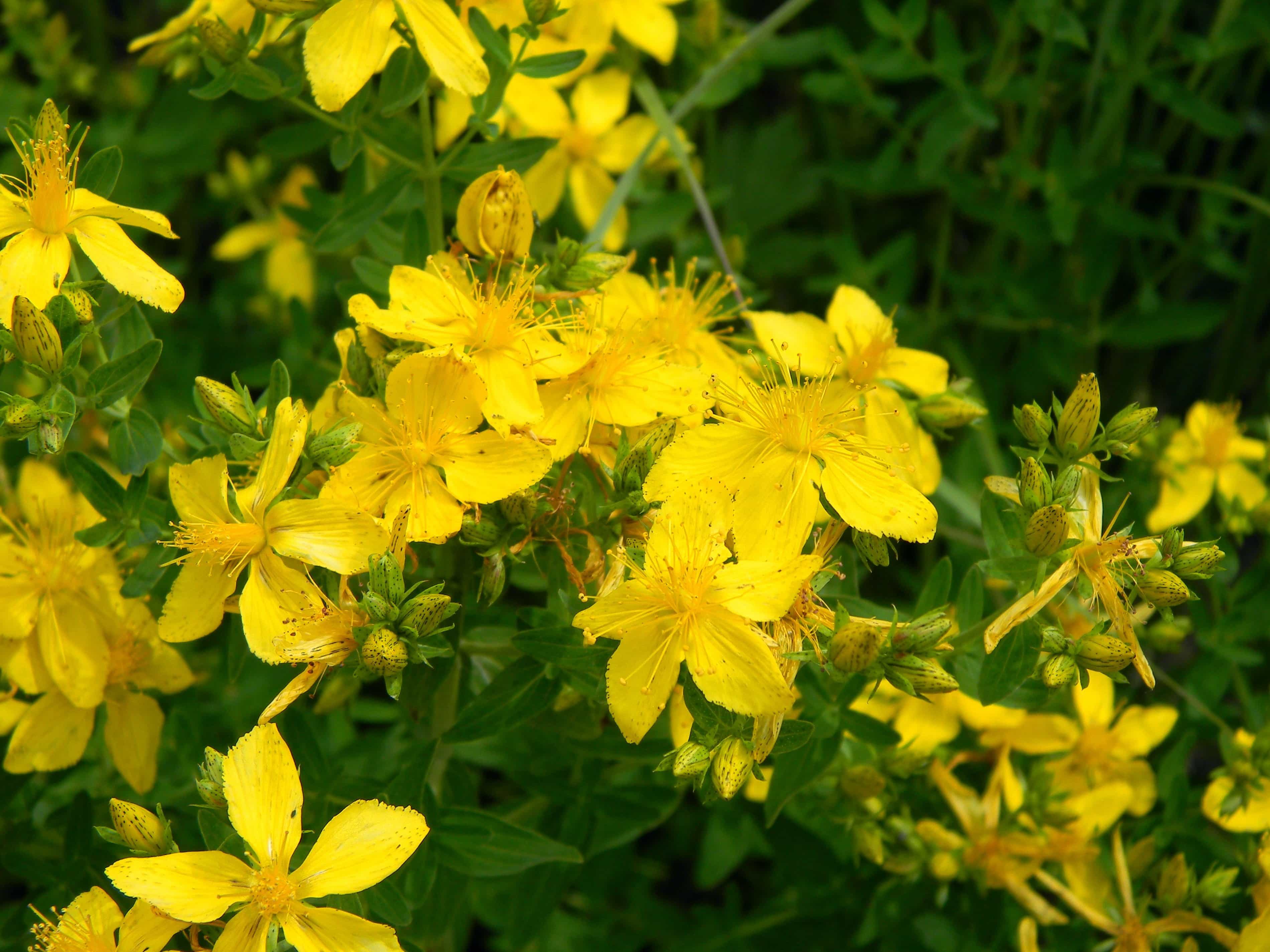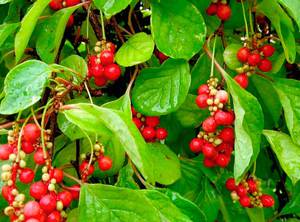 Chinese Schisandra is a magnificent tree-like plant whose stem and leaves exude a pleasant lemon scent. It is found mainly in the wild, although breeders have also bred cultivated garden species. In Russia, Chinese lemongrass is most widespread in the Far East (Amur region, Primorye, southern part of Sakhalin).
Chinese Schisandra is a magnificent tree-like plant whose stem and leaves exude a pleasant lemon scent. It is found mainly in the wild, although breeders have also bred cultivated garden species. In Russia, Chinese lemongrass is most widespread in the Far East (Amur region, Primorye, southern part of Sakhalin).
Content
Botanical description
The flowers of the plant are dioecious, white. The leaves have a smooth, shiny surface and are located on reddish petioles. Depending on the height of the support, the stems of lemongrass can be from 2.5 m to 15 m.
The plant can be of two types:
- Monoecious: on one stem there are flowers of both types;
- Dioecious: female flowers have large greenish pistils, stamens are located in the center of male flowers.
Lemongrass blooms in late spring. In August, berries of a bright red color, reminiscent of currants, ripen.
Plant reproduces in the following ways:
- seeds;
- cuttings;
- root suckers;
- layering.
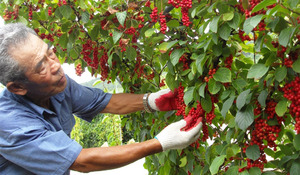 The first method is the most effective. In the spring, one month before planting, the seeds must be stratified by placing them in wet sand, while the temperature should be around +18 ° C. if the seeds are too dry, seedlings will appear only after a year.
The first method is the most effective. In the spring, one month before planting, the seeds must be stratified by placing them in wet sand, while the temperature should be around +18 ° C. if the seeds are too dry, seedlings will appear only after a year.
For better growth, lemongrass should be prepared soil fertilized with leaf humus... Remember! Only two-year-old seedlings can be planted permanently.
During the period of growth and development, the vine requires some care, especially young plants. Considering that the climate in the homeland of Schisandra is constantly humid, it is necessary to provide the most similar conditions: in intense heat, spray the plant with warm water. In dry weather, irrigation requires about 6 buckets of water per bush to retain moisture. The soil must be covered with a layer of dry earth.
After the foliage has fallen (in the fall), it is necessary to prune, but not earlier than 3 years after planting. Of the emerging shoots, the strongest should be left, but no more than 4 - 5 pieces.
Excessive thickening negatively affects fruiting, so pruning must be done without fail.
Lemongrass begins to bear fruit in 4-5 years. The roots of the plant do not tolerate drying out of the soil, so it is better to keep them in the shade. Although the vine itself shows excellent growth and development, if there is direct sunlight, preferably throughout the day.
Since lemongrass is a climbing plant with a rather heavy deciduous mass, it is necessary to provide reliable strong support immediately after planting. It is not recommended to plant the vine in a ventilated place, as this can lead to deformation of the plant.
Planting is carried out in trenches or pits, about 0.5 m deep and about 0.6 m wide, the bottom must be laid with a layer of broken shards or bricks and covered with soil (27 - 30 cm), watered. And only after carrying out these procedures, you can plant seedlings, water again.
Chinese schisandra: medicinal properties and contraindications
 An interesting fact is that all parts of the plant are usable for medicinal purposes.Schisandra chinensis is valued not only for its beauty, but also for its unique beneficial properties. In addition, lemongrass is widely used in industry and cosmetology. Medicines based on lemongrass are used to treat bronchitis, tuberculosis, diseases of the central nervous system, bronchial asthma and gonorrhea. The essential oil, which is part of the plant, has many beneficial properties: it tones the skin, gives it firmness and elasticity. Lemongrass berries and juice are used to make syrups, sweets, and preserves.
An interesting fact is that all parts of the plant are usable for medicinal purposes.Schisandra chinensis is valued not only for its beauty, but also for its unique beneficial properties. In addition, lemongrass is widely used in industry and cosmetology. Medicines based on lemongrass are used to treat bronchitis, tuberculosis, diseases of the central nervous system, bronchial asthma and gonorrhea. The essential oil, which is part of the plant, has many beneficial properties: it tones the skin, gives it firmness and elasticity. Lemongrass berries and juice are used to make syrups, sweets, and preserves.
In medicine, mainly used fruits and seeds of the plant.
The beneficial properties of lemongrass are widely used for mental and physical exertion, as well as for stimulating the forces of the body as a whole. Long-term use of this drug provides:
- lowering sugar (which is especially important for diabetic patients);
- increasing the body's immune defense;
- increase in muscle strength, lung capacity;
- increasing potency and performance;
- stimulation of sexual activity;
- acceleration of metabolic processes.
Schisandra chinensis also widely used for anemia, diseases of the gastrointestinal tract, lungs and kidneys. If you suffer from low blood pressure or heart failure, then the Chinese magnolia vine will come to the rescue.
The use of this plant has a positive effect on the stabilization of cholesterol levels and helps prevent atherosclerosis. Lemongrass successfully copes with depression, fatigue, migraines, irritability and other similar manifestations. Medicines, which are based on Chinese magnolia vine, will help you quickly adapt to a foreign climate, get used to the dark and significantly improve vision.
Cooking use
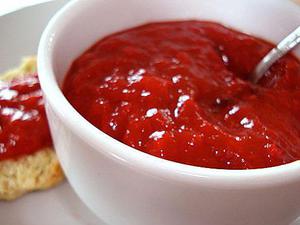 Leaves and fruits of Schisandra chinensis are widely used in cooking. So, essential oilcontained in the leaves of the plant, makes it possible to obtain an excellent drink with tonic properties and excellent taste.
Leaves and fruits of Schisandra chinensis are widely used in cooking. So, essential oilcontained in the leaves of the plant, makes it possible to obtain an excellent drink with tonic properties and excellent taste.
A healthy semi-finished product can be prepared from the fruits of lemongrass by canning whole berries or squeezed juice from them. Such a drink has increased biological activity and all the medicinal properties of lemongrass preparations, therefore it should also be considered a drug.
The fruits of the plant can harvested by drying... At the same time, they retain all the beneficial substances. Initially, the berries are dried in the oven at a temperature of no more than 40 ° C, gradually increasing it to 60 ° C. It is not recommended to raise the temperature above 90 ° C, as this destroys the schizandrin and the fruits lose their medicinal properties.
Traditional medicine recipes
Alternative medicine has long used the beneficial properties of the plant for the treatment of various diseases.
- Lemongrass tincture. Pour the crushed seeds with alcohol in a ratio of 1/2 and place in a cool, dark place for two weeks. Take 3 times 30 drops.
- Lemongrass infusion. Chop the berries. Pour 10 g of raw materials with boiling water (1 tbsp), let it brew for 6 hours and strain. Take warm in 1 tbsp. l. 2 times a day.
- Lemongrass tincture. Pour the berries with alcohol (about 50% strength) and leave for 10 days. Then drain the liquid and repeat the procedure. After the berries are infused a second time, mix both alcohol solutions and dilute the resulting liquid with distilled water. Use the tincture for frequent dizziness, sleep disturbances, etc. 2-3 times a day. Dosage - 2.5 ml for a course of therapy, you will need 100 ml of alcoholic infusion.
- Stimulant drug. It contains lemongrass tincture, sodium bromide and sodium clfine benzoate. Ingredients are taken in a 4/2/1 ratio. distilled water - 200 ml.The drug is used 3 times a day, 10-20 ml, the drug is prescribed for increased fatigue, depressive and asthenic conditions, etc.
- External remedy. Schisandra has shown itself to be quite effective in treating eczema. To prepare the drug, the pulp of berries is used, which must be infused for 2-3 days. Then thicken the resulting liquid in a water bath until the volume is reduced by 50%. The drug is ready for use.
- Toning tea. Dried young leaves of the plant (10 grams), pour boiling water (1 liter). Take instead of regular tea. You can add honey or sugar.
Contraindications
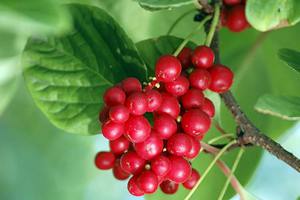 In order to avoid negative consequences when using preparations based on schisandra chinensis, it is necessary consult a doctor beforehand... Since schizandrin, which is the main active ingredient of the plant, has a high biological activity, the use of lemongrass has some limitations. This is mainly associated with diseases of the central nervous system (hyperexcitability, high intracranial pressure, arachnoiditis).
In order to avoid negative consequences when using preparations based on schisandra chinensis, it is necessary consult a doctor beforehand... Since schizandrin, which is the main active ingredient of the plant, has a high biological activity, the use of lemongrass has some limitations. This is mainly associated with diseases of the central nervous system (hyperexcitability, high intracranial pressure, arachnoiditis).
Heart failure, VSD, hypertension and epilepsy are also contraindications. It is not recommended to use Chinese lemongrass during pregnancy, so as not to provoke premature birth (plant-based preparations are sometimes used to enhance labor attempts).
As a contraindication, and individual intolerance organism.
So, before starting therapy, you should definitely consult a doctor in order to avoid possible adverse effects.
